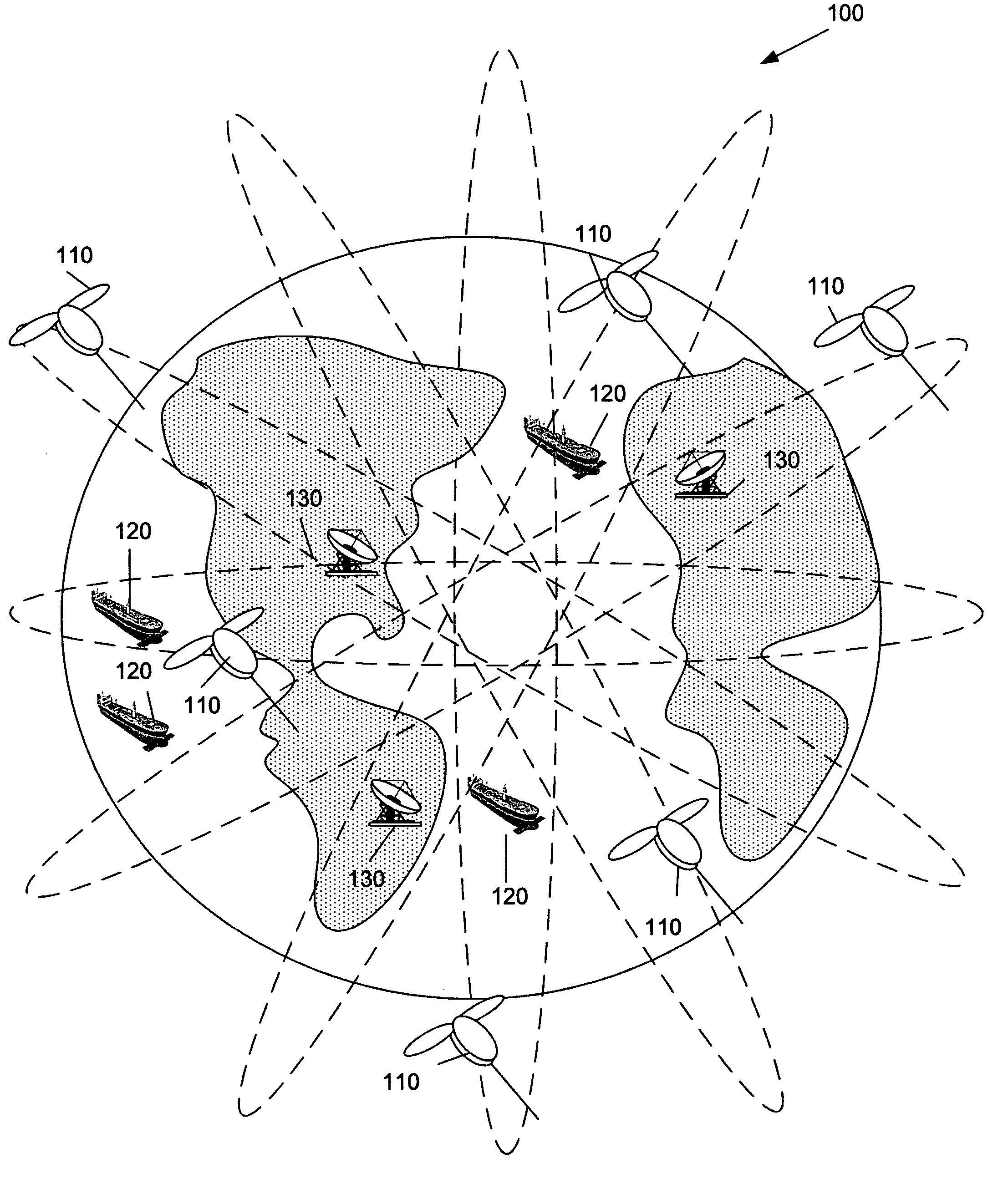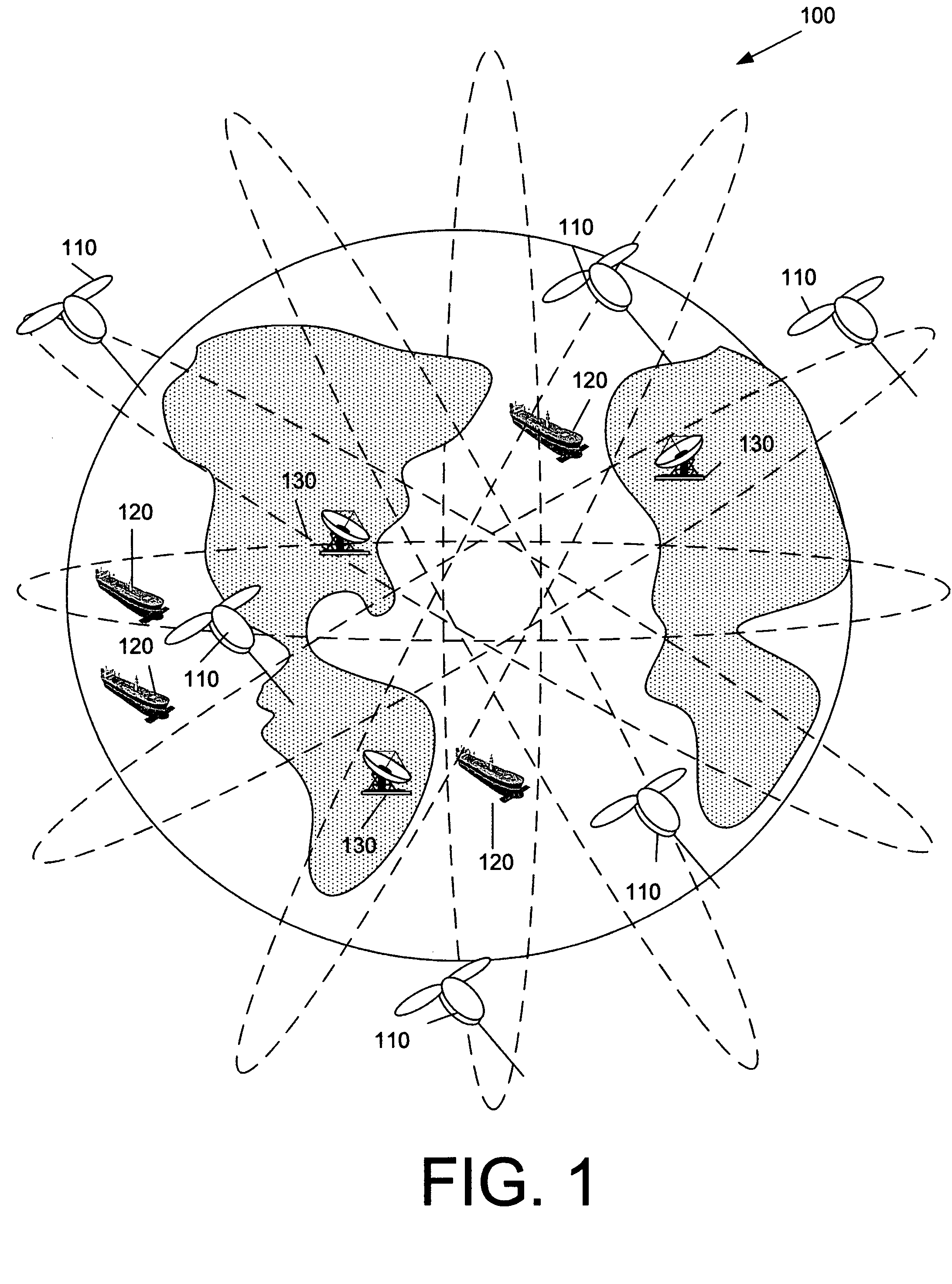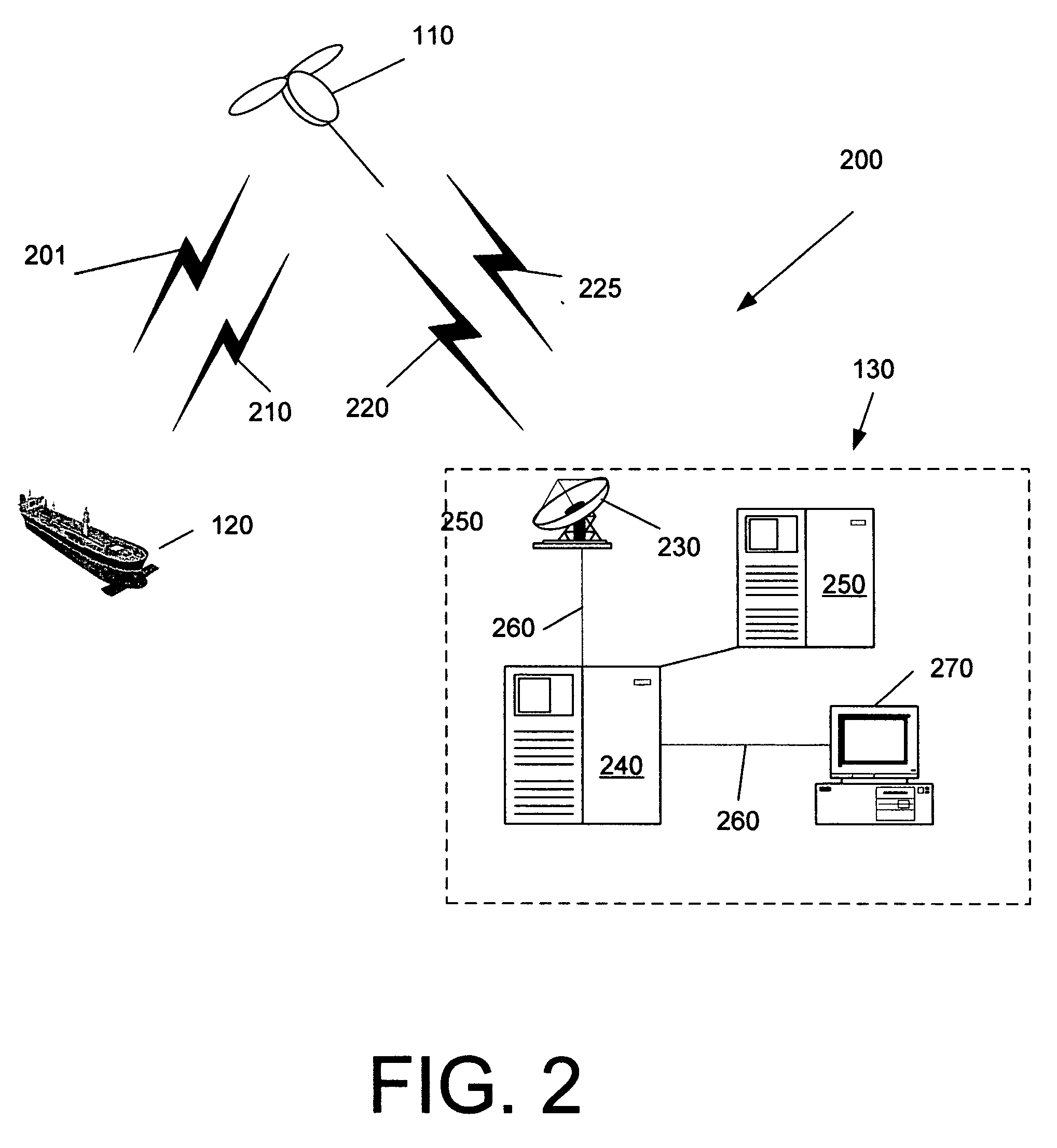Space based monitoring of global maritime shipping using automatic identification system
a technology of automatic identification and global maritime shipping, applied in the field of automatic identification system, can solve the problem of inherent danger of navigation at sea and in waterways
- Summary
- Abstract
- Description
- Claims
- Application Information
AI Technical Summary
Problems solved by technology
Method used
Image
Examples
Embodiment Construction
[0021] A low earth orbiting constellation system of satellites is described that implements a space based global AIS monitoring system. The constellation includes a plurality of low earth orbit (LEO) satellites that monitor all AIS equipped vessels on the worlds oceans and waterways, and process AIS signals described herein. The AIS satellite constellation and system are described in greater detail below with examples in reference to the corresponding drawings. One will appreciate that the drawings provided herein are not to scale and are exemplary only for the purpose of illustrating various embodiments described herein.
[0022]FIG. 1 shows an exemplary AIS satellite system 100. A constellation includes a number of AIS satellites 110 that communicate with vessels 120 and ground elements 130. The AIS satellite system 100 receives and transmits AIS information to and from nearly any vessel 120 via the AIS satellite link to anyplace in the world on a near real time basis.
[0023] As sho...
PUM
 Login to View More
Login to View More Abstract
Description
Claims
Application Information
 Login to View More
Login to View More - R&D
- Intellectual Property
- Life Sciences
- Materials
- Tech Scout
- Unparalleled Data Quality
- Higher Quality Content
- 60% Fewer Hallucinations
Browse by: Latest US Patents, China's latest patents, Technical Efficacy Thesaurus, Application Domain, Technology Topic, Popular Technical Reports.
© 2025 PatSnap. All rights reserved.Legal|Privacy policy|Modern Slavery Act Transparency Statement|Sitemap|About US| Contact US: help@patsnap.com



